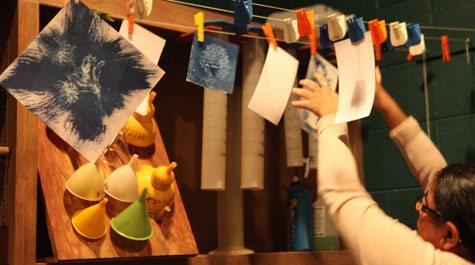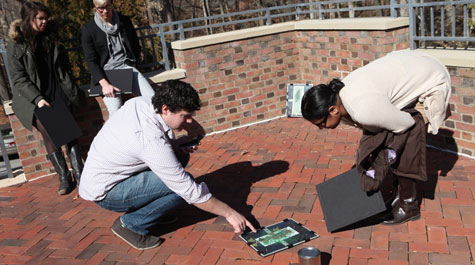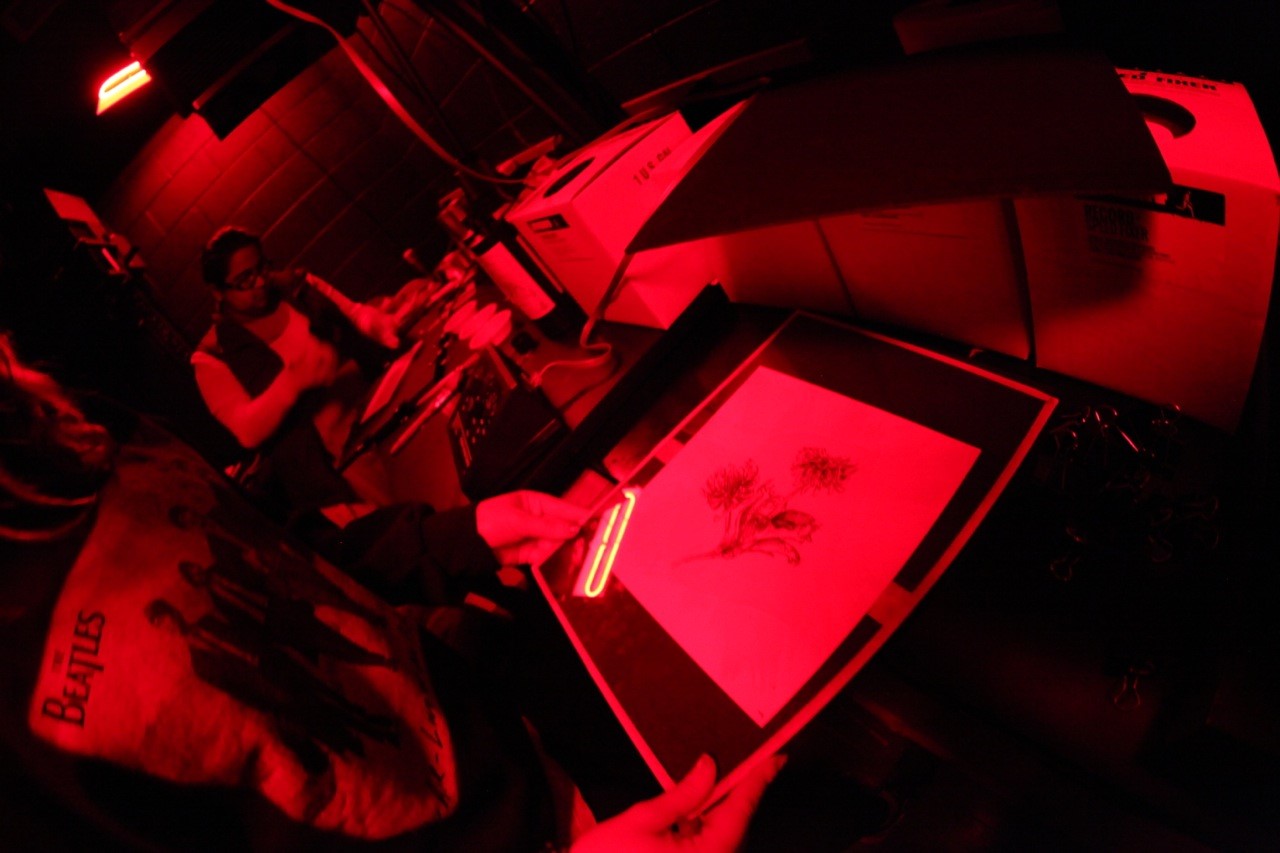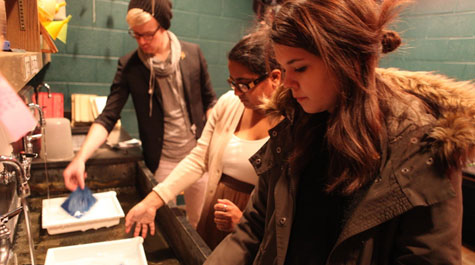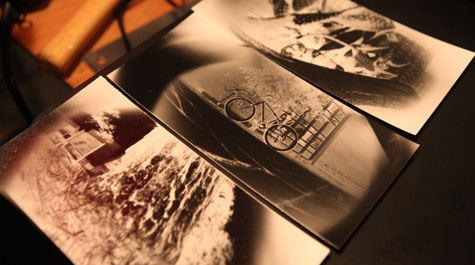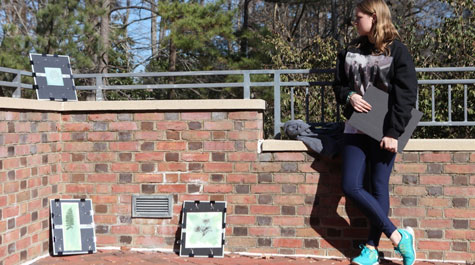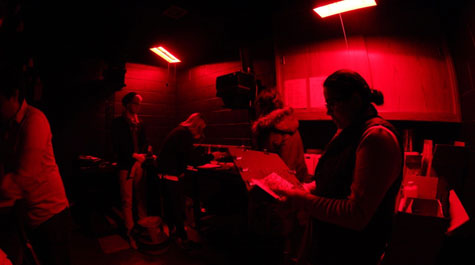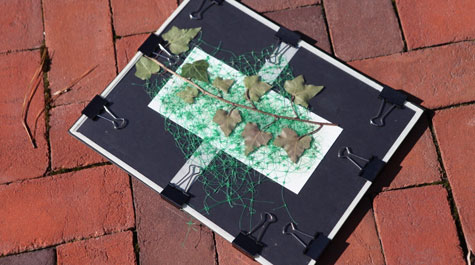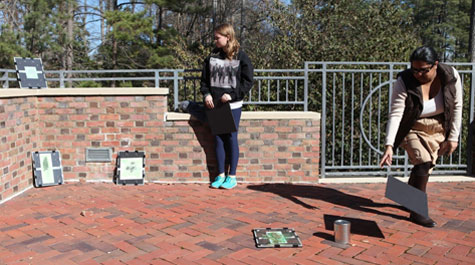W&M launches first art photography class
Somayah Allibhai-Mawani knows something is wrong even before the print is finished developing.
“It seems so dark,” she says softly.
She, two other William & Mary students and Visiting Assistant Photography Professor Eliot Dudik are in a forgotten darkroom in the basement of Millington. It is believed to have housed the Flat Hat’s darkroom before the advent of digital news photography.
Allibhai-Mawani’s print is more than just dark. It’s entirely black. Dudik suggests she try again.
The class represents the university’s first foray into art photography. Dudik joined William & Mary in the summer specifically to develop a photography program within the Department of Art & Art History.
He also coordinates the Andrews Gallery, which is increasingly featuring new contemporary photography in addition to work of university artists in mediums traditional to William & Mary.
Hearing that the photo class was on the horizon, a number of senior art and art history students expressed disappointment that they’d graduate before having a chance to take any classes. So Dudik decided to offer a stripped-down crash course in photography as an independent study class this semester to those four seniors: Allibhai-Mawani, Kelsey Hughes, Grayson Cooke and Austen Dunn.
“I'm trying to give them a good introduction to everything I would normally teach across the entire curriculum,” Dudik said.
They began with antique and non-silver photo processes, such as cyanotypes. They progressed to working in the darkroom with photographs they’ve shot with pinhole cameras – made out of paint cans into which students have placed photo paper.
{{youtube:medium:left|smCazKuQ5mw}}
Next they move on to shooting with the famous Holga cameras of the 1980s, then to other medium- and large-format cameras, and finally to current digital scanning and printing technology.
Back in the darkroom, Dudik inspects Austen Dunn’s print, noting that its edges seem much lighter than the middle of the image. The pinhole photos are soft and dreamy to begin with, but this one is positively ephemeral.
“The great thing about this kind of process, the same with the Holga camera that you guys are going to be using soon, is that each camera has its own personality,” Dudik says. “It looks almost like Austen's has a light leak, so I'm checking to see if there’s a part that wasn't painted black that was maybe bouncing light around inside there, but it looks pretty well painted … It's a characteristic of your camera, which is cool. This looks great.”
Student Kelsey Hughes says she originally assumed the class would focus on how to take good photographs, based off Dudik’s work. Instead, students were immediately immersed in the history of photography, which she said provided context and a better appreciation of the craft.
“Learning about the camera obscura and how a camera actually works, I thought it was really interesting,” she said. “I enjoy all of these different processes, rather than just going outside with a digital camera and taking pictures all the time. Anyone can do that easily. But no one knows how to do this with a paint can.”
After 15 minutes or so, Allibhai-Mawani’s second print has come out perfectly, revealing from ground level the details of a massive tree, which she reveals stands outside Millington. It’s perfectly balanced between the hazy dreamlike effect and the solid, craggy rootedness of the tree.
“There we go,” Dudik says, likening the photograph to a Sally Mann landscape. “So I wonder what happened to this other one; it must have been exposed to light somehow or another.”
“Much better than pure black,” Allibhai-Mawani said.
Dudik plans to offer a similar class again in the fall, plus a joint class with Associate Art History Professor Charles Palermo, in which Palermo will lecture on photographic history and Dudik will provide the hands-on instruction.
 Skip to main content
Skip to main content

